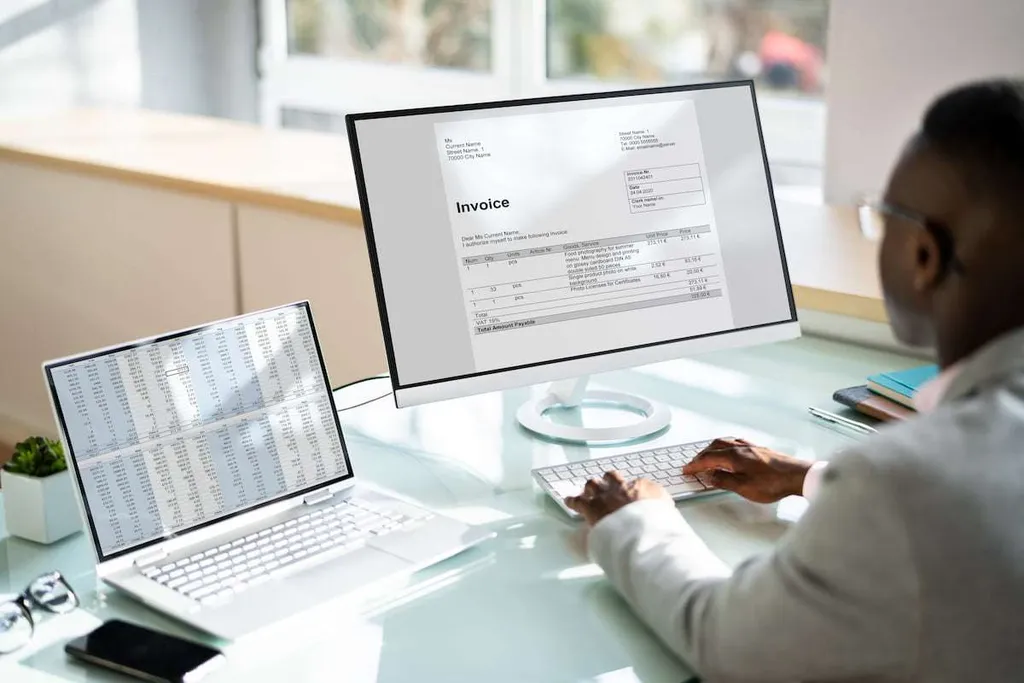Invoice matching, or purchase order matching, involves cross-checking invoices against related financial records. The primary goal? Ensuring everything aligns before processing a payment. In accounts payable, this step is essential—it verifies that vendor payments are accurate and properly recorded.
Beyond accuracy, invoice matching strengthens supplier relationships by providing clear transaction details. This way, businesses have a reliable reference to support payments, fostering transparency and trust with vendors.
Types of Invoice Matching
You can handle it in numerous ways, but something that everyone is used to is 2-way, 3-way invoice matching, and 4-way. Some vital records can come into play, too:
- supplier contracts,
- goods delivery receipts (GDR),
- delivery confirmations.
Everything should be checked out properly.
Two-Way Matching
If you want to avoid extra headaches, 2-way matching is the easiest thing to do. So, here, before transferring money to the account, you must review the invoice with the purchase order (PO) side by side. The main goal is to see that the rates, product capacities, and other vital things are the same. When the supplier and the seller have been cooperating for more than one year, it is undoubtedly a good option (however, if it is a newly formed relationship, you should not resort to this). Where can it be used? In regular purchases, internal transactions or work with subsidiaries where the probability of errors is close to zero.
Three-Way Matching
In this case, one more stage will be added to the second — a receiving report (it can be a packing list or confirmation of delivery). All the same, but this record also needs to be checked. That is, here we make sure that the goods or services were really delivered properly. It is often preferred when working with newly formed contracts with business partners. Or when there are transactions associated with greater risk.
Four-Way Matching
When we implement quality checks through inspection reports, the procedure ensures everything meets specifications before financial transactions occur. This 4-way match method acts as a safeguard across regulated sectors like aerospace manufacturing, automotive production, and pharmaceutical development. These industries prioritize compliance due to their strict operational requirements and legal obligations.
How Invoice Matching Works
If you sleep on invoice matching, you’re opening the door to unpaid balances, extra invoices, or even paying off things you didn’t actually get. Spotting mistakes keeps your books tidy.
Step-by-Step Process of Invoice Matching
Gather all relevant information. Begin with the PO to confirm the original request, then review the invoice to verify the supplier’s charges. Next, cross-reference the goods receipt note to confirm the actual items delivered. Once these documents are organized, proceed to the next phase.
- Double-check the details. Compare everything — product details, prices, amounts, and terms. Sometimes, you’ll only need to compare the invoice and purchase order, but other times, you’ll want to check all three.
- If something doesn’t line up, don’t just let it slide. Sort out the issue before going any further. Reach out to the supplier or your internal team to fix the missing info.
- Once everything matches, send the invoice through the approval process according to your company’s procedures. After approval, you’re good to process the payment.
Lastly, don’t disregard the need to store all those records properly. Keep them organized during future audits.
Common Errors in Invoice Matching
You may have a lot of challenges with the invoice matching process. Let’s take a look at some typical errors to avoid:
- Extra invoices are a common issue when overpaying, especially if they slip through unnoticed. Catching them early is key. Luckily, automated systems are perfect to spot these issues before they cause trouble.
- Wrong prices or quantities are another common headache. Suppliers might mess up the numbers, or the purchase order itself might be off. It’s crucial to cross-check all the facts.
- A purchase order or receipt might not show up in the system. Invoice processing automation takes care of it. It tracks down the missing pieces and sends reminders to keep things on track.
Another one: outdated systems make matching invoices a frustrating task. They slow everything down and introduce more chances of mistakes. Switching to modern, automated tools speeds things up. The best part? When you deal with invoices in time, you may get early payment discounts from vendors.
Benefits of Invoice Matching
When you reconcile invoices with POs, you may cut down on financial risks and keep supplier relations healthy. Moreover, a solid system can come handy in cash flow forecasting. With it, all payments are submitted on time and without issues.
When done right — and even better with automation — it adds real value and efficiency to any team.
Error Reduction
Invoice matching is a game-changer when it comes to saving businesses from costly errors. With it, you won’t pay more than you should or process invoices that aren’t correct. Manual checks are often vulnerable to simple slip-ups — no one is immune to typos, missed duplicates, or overlooking details. But with automated systems, those risks drop dramatically.
Fraud Prevention
See invoice matching as a security guard of your finances — it simply stops fraud in its tracks. Only legitimate invoices make their way through to payment. Invoices are immediately checked against approved purchase orders and receipts, and if something doesn’t line up, it triggers an alert.
Improved Vendor Relationships
Invoice matching isn’t just about accuracy; it speeds up the whole approval. When payments are prompt and precise, suppliers feel confident in your business. A seamless matching system means fewer mistakes, happier suppliers, and smoother routines. Automation even makes onboarding new vendors a breeze. Collaboration between procurement and accounts payable (AP) teams becomes significantly more efficient.
Automating Invoice Matching
Automatic invoice verification reinvents how we manage payments. As they reduce errors and accelerate workflows, firms can settle bills more efficiently and with fewer problems. Modern software solutions make handling large volumes of invoices surprisingly straightforward, turning what was once a complex task into a streamlined operation.
AI-Powered Invoice Matching Solutions
AI takes invoice processing to the next level. It boosts accuracy and speeds things up. It automatically scans and compares records, taking manual work from your hands. Thanks to machine learning, the system learns from past data and picks up on patterns. Also, think about robotic process automation (RPA). It scans, compares, and validates payment receipts against POs.
Benefits of Automated Invoice Matching
Intelligent matching engine speeds up approvals and lightens the load on administrative teams. Plus, it keeps everything in line with internal policies and financial rules. Automated invoice matching also means that records stay uniform and ready for review at any time. With fewer mistakes and delays, teams shift their attention to more important duties instead of getting bogged down by data entry and checks.
Implementing Invoice Matching Software
Make sure your software offers smart data capture, instant alerts, and advanced reporting tools. It should handle 2-way and 3-way match without breaking a sweat. Connecting with ERP and accounting systems is a must — it keeps everything flowing and brings all your financial data into one place. A simple, intuitive interface and automation features will help your financial management team hit the ground running.
What If There’s a Mismatch Found by Invoice Matching?
When invoice matching spots a mismatch or issue, the item in question gets flagged. The accounting team steps in to investigate. They’ll check if the discrepancy falls within the company’s acceptable range. If it does, the invoice will move forward with payment. But if it’s beyond the set tolerance, the invoice gets put on hold, and no payment is made. The vendor is then informed so they can fix the problem and get everything back on track.
The After Effects of Excellent Invoice Matching
A robust invoice matching system enhances financial accuracy. It speeds up approvals, and keeps everything compliant — without piling on extra manual tasks. It stops overpaying, duplicate charges, and wrong invoices, giving you better control over your finances. Moreover, it clears up bottlenecks in AP, helping companies pay invoices on time and steer clear of late penalties.
Conclusion
Invoice matching is key to keeping your finances on track. It helps steer away errors, fraud, and late payments. Switching from manual methods to automated systems ramps up efficiency, too. Automation makes managing accounts payable smoother and fosters better relationships with vendors. Companies adopting this technology control their finances more effectively.


















